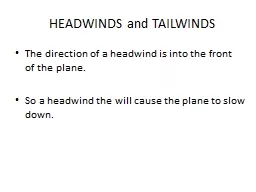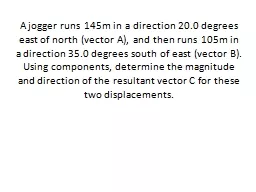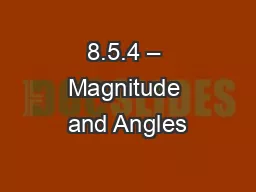PPT-Practice A plane flies 1500 miles East and 200 miles South. What is the magnitude and
Author : yoshiko-marsland | Published Date : 2020-01-14
Practice A plane flies 1500 miles East and 200 miles South What is the magnitude and direction of the planes final displacement A hiker walks 80 m North 20 m East
Presentation Embed Code
Download Presentation
Download Presentation The PPT/PDF document "Practice A plane flies 1500 miles East a..." is the property of its rightful owner. Permission is granted to download and print the materials on this website for personal, non-commercial use only, and to display it on your personal computer provided you do not modify the materials and that you retain all copyright notices contained in the materials. By downloading content from our website, you accept the terms of this agreement.
Practice A plane flies 1500 miles East and 200 miles South. What is the magnitude and: Transcript
Download Rules Of Document
"Practice A plane flies 1500 miles East and 200 miles South. What is the magnitude and"The content belongs to its owner. You may download and print it for personal use, without modification, and keep all copyright notices. By downloading, you agree to these terms.
Related Documents














